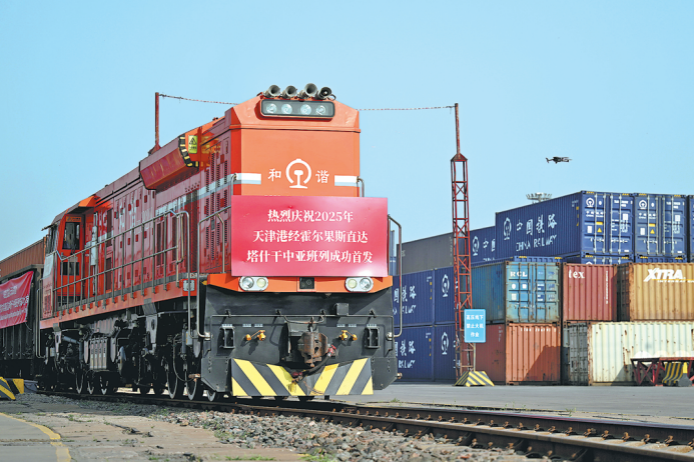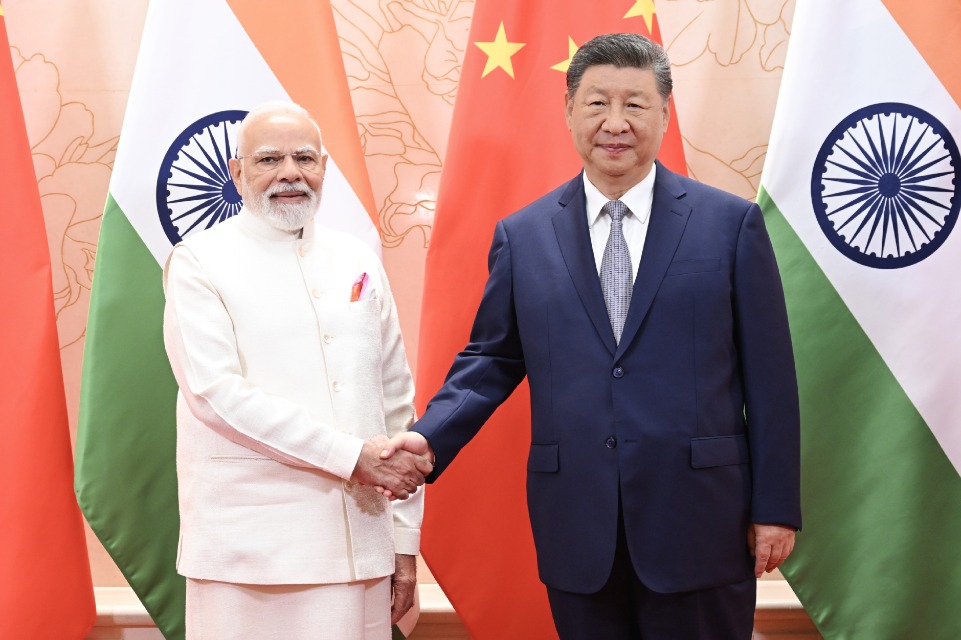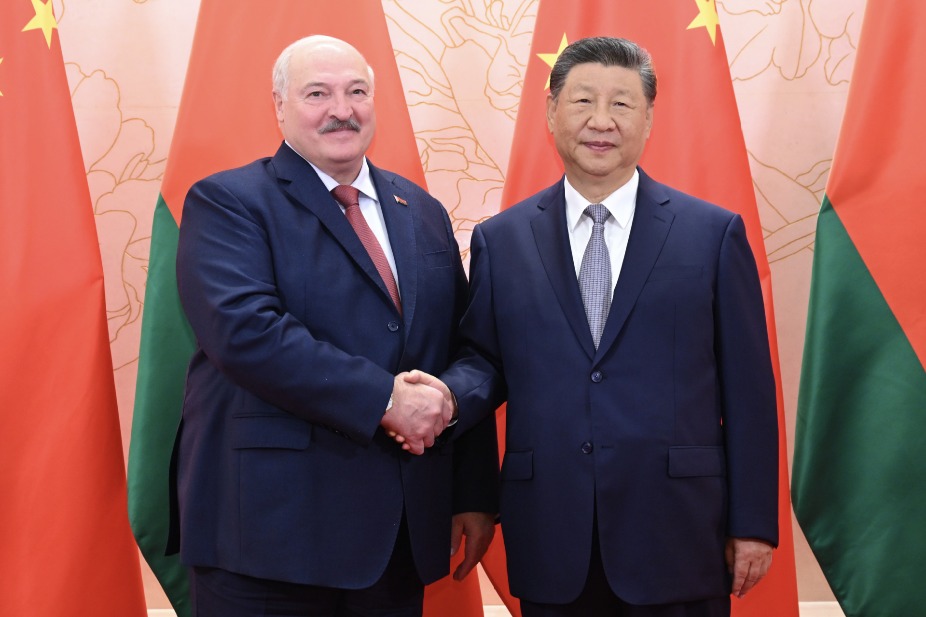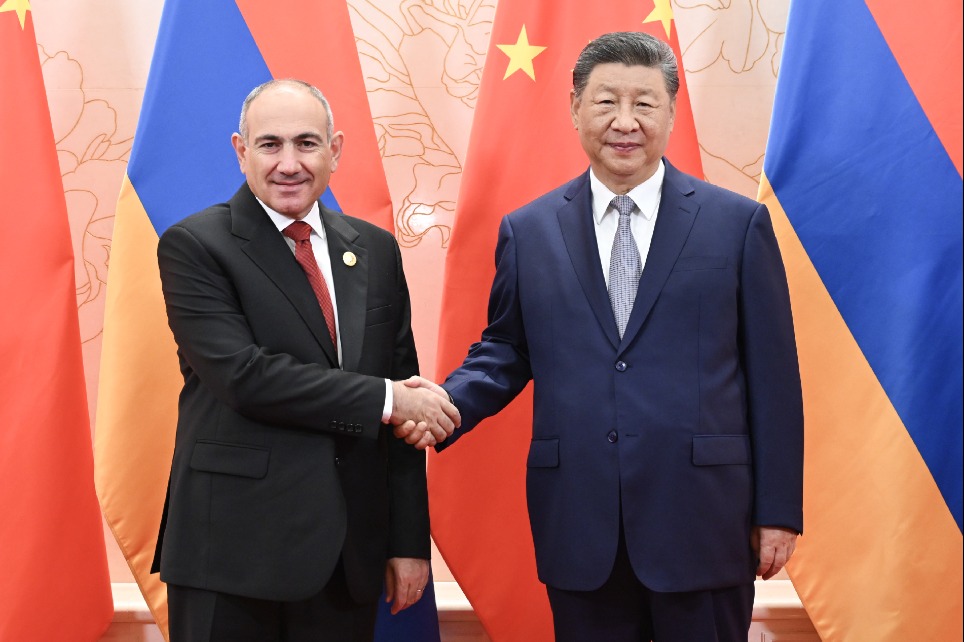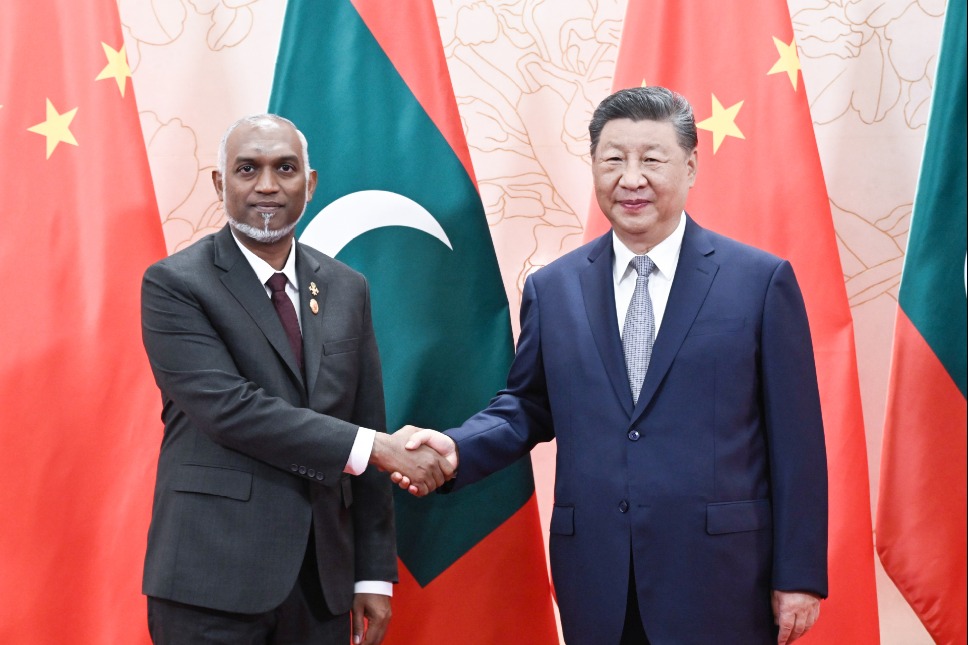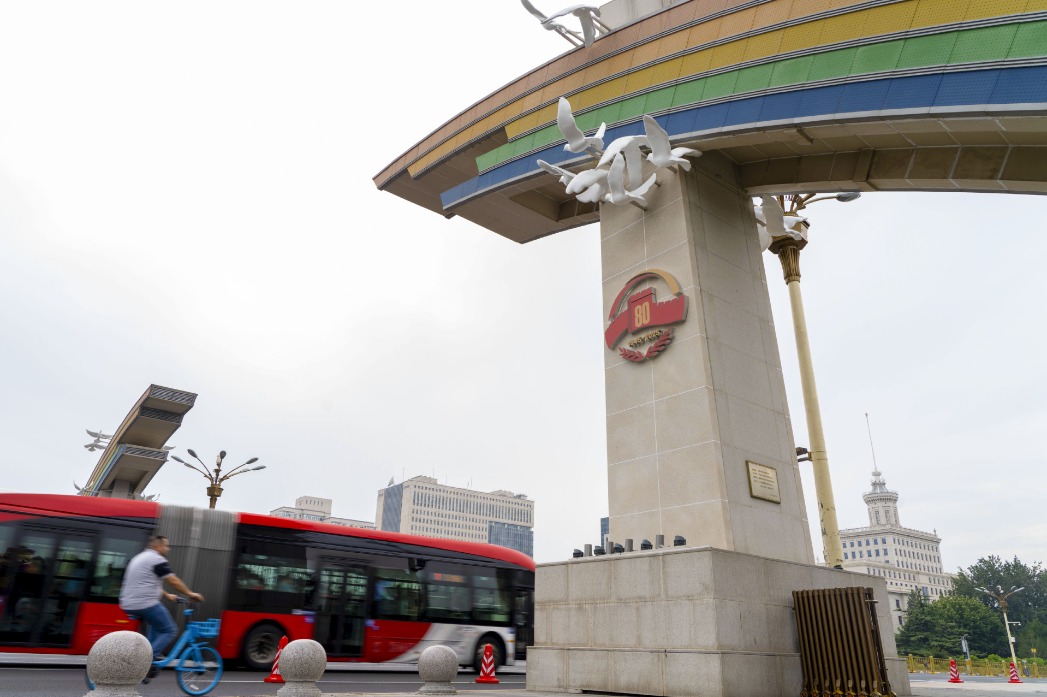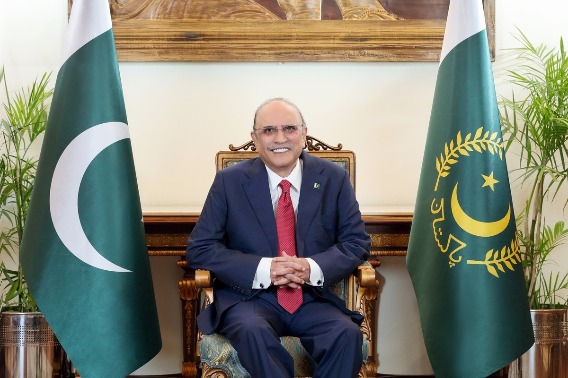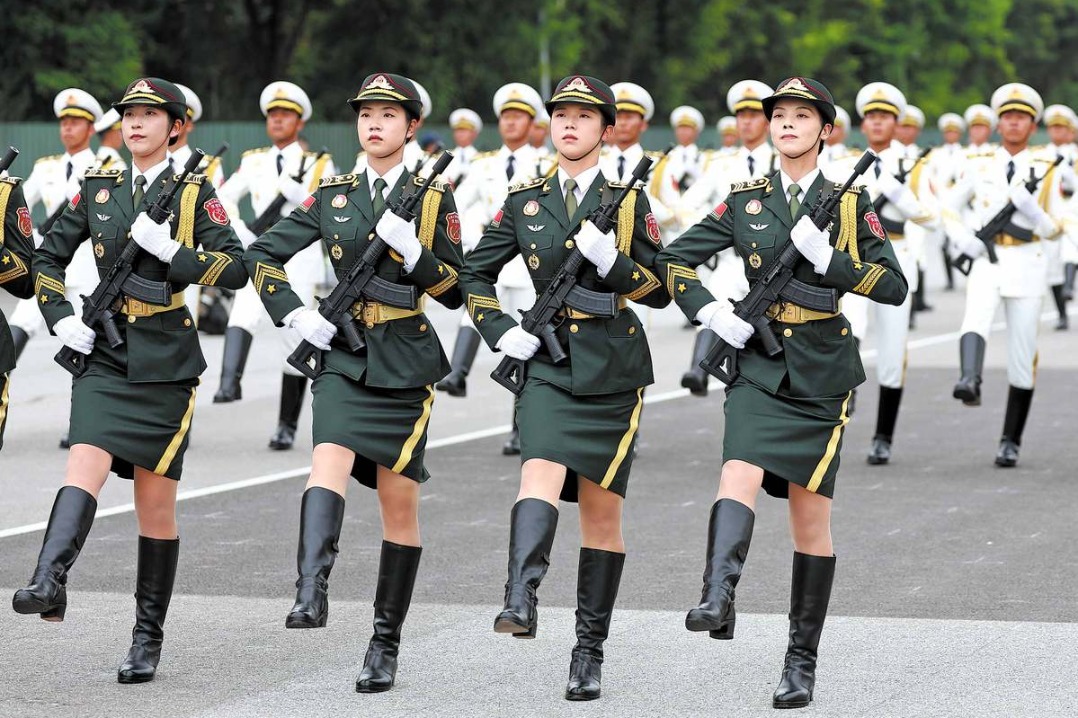Bridges rather than walls
SCO's internal and external expansion underscores the organization's progress and its intensified efforts to realize a shared future

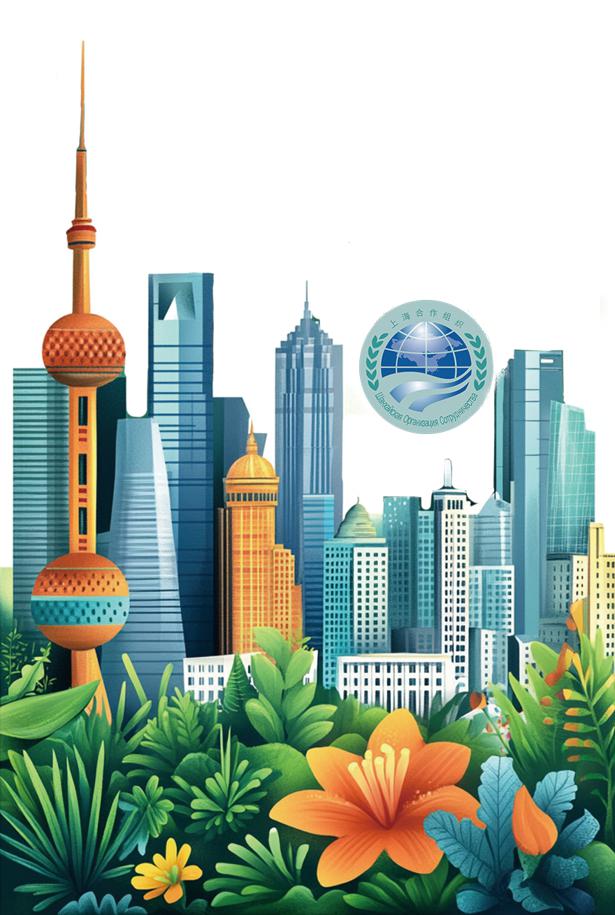
The Shanghai Cooperation Organization has evolved from a collective security mechanism to one of the world's largest platforms for cooperation — both in scope and scale — in 24 years since its founding. Today, the organization brings together 10 member states, two observer states and 14 dialogue partners, covering nearly half of the world's population and more than 25 percent of the global GDP.In its early years, the SCO was primarily a response to border security issues, and a means to counter separatist, terrorist and extremist activities in Central Asia, but as regional needs grew, these narrow priorities gradually expanded into economic integration, energy cooperation and digital development. The latest concerns are the high tariffs imposed by the United States and its distorting of global supply chains.
In the face of disruptions to economic progress, pressures on governance systems and the restrictions on high technologies, the SCO Summit, being held in Tianjin on Sunday and Monday, stands as a turning point for the participants' future. It is set to make some challenges more visible and offer concrete solutions to manage the potential hazards. Here, complex networks of trade, finance and technology supply chains rise to the surface when geopolitical imbalances emerge. For instance, the global shortage of vaccines during pandemics, the artificially created global shortage of semiconductors, and the sudden tariff hikes that stall industrial production around the world. These are all invisible structures that have visible hazards.
The SCO development strategy for the next decade — due to be approved at the Tianjin Summit — seeks to deepen both internal expansion, by strengthening cooperation in social development and small and medium-sized enterprise financing, and external expansion, by welcoming new members and dialogue partners. These moves are designed to make the SCO more inclusive, better coordinated and more participative in shaping new global governance.
The SCO's expansion comes at a time of major global challenges. Supply chain disruptions — from developed economies' apprehensions about rising economies to geopolitical tensions over tariffs and technology — have revealed the fragility of cyberspace and the informal economy. As a result, developing economies face the difficulties of unequal access to technology, limited investment in innovation and the risk of being caught in the trade crossfire among major economies. For the SCO, the task is not only to create new links among its members but also to ensure these links are equitable and fair.
The SCO's response has been to place inclusivity and coordination at the center of its strategy. The Tianjin Summit highlights a plan for a Eurasian digital common market, where technology and innovation are coordinated under the SCO framework. As desired and directed by its members, artificial intelligence, green technologies and cross-border digital infrastructure will be areas of joint effort. This includes harmonizing digital regulations, creating joint research hubs for AI and renewable energy, and establishing shared standards for cybersecurity and data flows across borders. With the success of the Belt and Road Initiative in addressing infrastructure shortfalls, the SCO Summit is a timely venue for new ventures in building the informal institutions and technologies that jointly govern the socio-economic and cultural links through digital technology and cyber markets. These initiatives aim to bridge the infrastructure gaps, especially in less-developed SCO countries, and create digital integration across the region.
Another priority of the SCO is supporting SMEs. A stronger SCO role in financing and SME banking support can open doors for young entrepreneurs and local innovators, ensuring that the benefits of cooperation reach ordinary people, not only large corporations. For example, a young entrepreneur developing mobile payment solutions in Uzbekistan could gain easier access to financing through SCO-supported SME banks, while small agricultural companies in Kyrgyzstan might benefit from cross-border e-commerce platforms enabled by SCO digital integration. Together, these steps will help neutralize the risks of economic bullying and excessive power imbalances that often leave smaller nations at a disadvantage. In the past, entrepreneurship, high-tech development and leadership in creativity were largely attributed to the G7 and their subscribers. Now, SCO members have taken these into their own hands to make collaborative and cooperative coordination initiatives.
The SCO's efforts could reshape global economic flows in several ways. First, they may create new supply chain links that strengthen resilience across Eurasia. Second, financial innovations, including new currencies and settlement systems, could reduce overdependence on single markets. Third, cultural and educational exchanges will help build trust among societies as much as among governments. Fourth, the SCO's commitment to fairness and equity offers a model of cooperation that differs from zero-sum competition. Last, the success of digitalized markets in the economies on the SCO map will reduce the entrenched patterns of dominance in Western capitalism.
No one can deny the merits of having better access to technologies, new trade opportunities and stronger comparative positions in global markets. For the world at large, it signals that regional organizations can be powerful engines of peace and prosperity when they prioritize inclusivity, coordination and engagement. In other words, when the national stakes are interdependent, when opportunities are equitable and fair, and when participation and positive engagement are improved in optimal coordination, there is little room for pulling the legs from under others.
The SCO Tianjin Summit is more than a milestone. It is a moment to reflect on how far the organization has come and where it can go. From its modest beginnings, it now stands as a forum with both breadth and depth — addressing security, economic growth, technological innovation and cultural exchanges. The Tianjin Summit offers a chance to turn challenges into opportunities by advancing shared solutions that serve nearly half of the world's people. In an era when the world needs bridges more than walls, the SCO is showing that cooperation across borders, cultures and technologies can light the path to a more inclusive future.
The author is a professor of innovation studies at Liaoning University. The author contributed this article to China Watch, a think tank powered by China Daily. The views do not necessarily reflect those of China Daily.
Contact the editor at editor@chinawatch.cn.
















